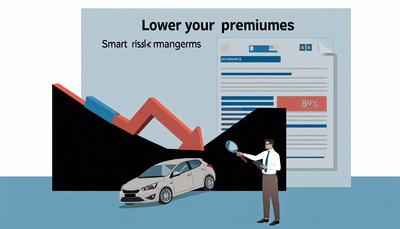Are You Overpaying for Risk? A Guide to Smarter Coverage Choices

Are You Overpaying for Risk? A Guide to Smarter Coverage Choices
When was the last time you reviewed your insurance policies with a critical eye? Most individuals and businesses buy insurance and forget about it—until a claim arises. But here’s the truth: many are unknowingly overpaying for risk. Let’s dive into how you can use smarter risk assessment to fine-tune your insurance coverage and make better financial decisions.
Understanding the Basics: What Is Risk?
In simple terms, risk is the possibility of a loss or an undesirable outcome. Insurance helps you transfer that risk to a third party in exchange for a premium. However, not all risks are created equal, and not all coverage fits every situation.
Before you can choose the right coverage, you need to understand the types of risks you face and assess how likely they are to occur. This is where risk assessment becomes essential.
The Pitfall: One-Size-Fits-All Insurance Coverage
Many people fall into the trap of purchasing generic insurance plans. While these may cover basic needs, they often include protections you don't need—or leave gaps in critical areas. Paying for coverage you’ll never use means you’re not only wasting money but also potentially exposing yourself to unnecessary risk elsewhere.
Common examples include:
- Over-insuring low-risk assets
- Underinsuring high-value items
- Duplicate coverage across multiple policies
Smart insurance isn't about more coverage—it’s about the right coverage.
Step One: Conduct a Personal or Business Risk Assessment
Start by identifying potential risks in your life or business. Ask yourself:
- What are the most valuable assets I need to protect?
- What events could cause significant financial loss?
- How likely are these events?
Use this information to prioritize your protection needs. For example, if you live in an area prone to flooding, flood insurance might be a must—while collision insurance on a seldom-used car may be less critical.
Step Two: Match Coverage to Actual Needs
Once your risk priorities are clear, evaluate your existing policies:
- Are you paying for optional add-ons that don’t apply to your situation?
- Is your deductible too low, resulting in higher premiums?
- Are there discounts or bundled plans you’re not taking advantage of?
Talk to a trusted insurance advisor about tailoring your policy based on your specific risk profile. This isn’t about cutting corners—it’s about making smart choices.
Step Three: Reassess Regularly
Your risks evolve over time. Major life events—like marriage, buying a house, starting a business, or having children—can dramatically alter your insurance needs.
Set a calendar reminder to revisit your insurance annually. A quick reassessment can help you adjust your coverage to match your current realities, ensuring you're neither underinsured nor overpaying.
Real-World Example: Small Business Owner
Take Sarah, a small business owner who paid for broad liability coverage, including cyber insurance her operations didn't require. After a risk consultant reviewed her policy, she adjusted her coverage to focus on property and employee liability—reducing her monthly premium by 20% while increasing protection where it mattered.
Conclusion: Smarter Choices Mean Better Value
Overpaying for insurance doesn’t necessarily mean you’re safer. In fact, misaligned coverage can leave you exposed where it counts. A thoughtful, data-driven approach to risk assessment ensures your insurance coverage is both cost-effective and fit for purpose.
Make it a habit: regularly review, reassess, and realign your policies. That’s how you turn protection into a smart choice.
Pro Tip: Work with an independent insurance advisor to compare options from multiple carriers tailored to your actual risk profile.
Ready to start making smarter insurance decisions? Begin with a self-assessment today and take control of your coverage—and your costs.







